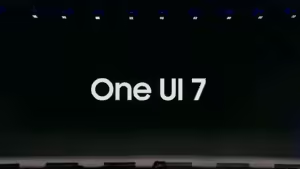
Mastering Google SEO: How to Rank on Top and Dominate Search Results
Mastering Google SEO: How to Rank on Top and Dominate Search Results
In today’s digital landscape, being visible on Google is crucial for any website aiming to attract traffic and grow its audience. Ranking on the first page—or even better, the top spots—can drastically increase your website’s visibility and success. But how do you achieve this? Here’s a comprehensive guide on how to rank on Google SEO and climb to the top of the search results, complete with tips and tricks to give you an extra edge.

1. Understand How Google’s Algorithm Works
Google’s algorithm is complex and continuously evolving, but understanding its basics is essential. Google uses a variety of factors to determine the ranking of websites, including relevance, authority, and user experience. The primary goal is to provide users with the most relevant and high-quality content for their queries. Key elements include:
- Keywords: Matching the right keywords with user intent.
- Backlinks: Quality and quantity of links pointing to your site.
- Content Quality: Fresh, informative, and engaging content.
- User Experience: Fast loading times, mobile-friendliness, and easy navigation.
Tip: Keep up with Google algorithm updates by following SEO news from reputable sources like Moz, Search Engine Journal, and Google’s own Webmaster Central Blog.
2. Conduct Thorough Keyword Research
Keywords are the foundation of SEO. Start by identifying the main keywords related to your content. Use tools like Google Keyword Planner, Ahrefs, or SEMrush to find high-volume keywords with low competition. Aim to include:
- Primary Keywords: The main topic or theme of your content.
- Secondary Keywords: Related terms or phrases.
- Long-Tail Keywords: More specific phrases that often convert better.
Trick: Use tools like AnswerThePublic to find popular questions related to your keywords. Creating content that answers these questions can help you rank for long-tail keywords and featured snippets.
3. Optimize On-Page SEO
On-page SEO involves optimizing individual pages to rank higher on Google. Here’s how to do it:
- Title Tags: Use compelling, keyword-rich titles.
- Meta Descriptions: Write clear, concise descriptions that include keywords.
- Headings (H1, H2, H3): Structure your content with headings and subheadings.
- URL Structure: Keep URLs short, descriptive, and keyword-focused.
- Image Optimization: Use alt text and descriptive file names.
- Internal Linking: Link to other relevant content within your site to improve navigation and SEO.
Tip: Make sure your primary keyword appears in the first 100 words of your content. Google tends to give more weight to keywords that appear early in the text.
4. Create High-Quality, Engaging Content
Content is king in SEO. Google prioritizes content that is valuable, original, and relevant to users. Focus on:
- Providing Solutions: Address common pain points or questions within your niche.
- Using Multimedia: Incorporate images, videos, and infographics to enhance engagement.
- Keeping Content Updated: Regularly refresh old content to keep it relevant.
- Encouraging User Interaction: Include comments, polls, or social sharing options.
Trick: Use the skyscraper technique to create content that is better than what’s currently ranking for your target keywords. Find top-performing content in your niche, and create a more comprehensive, up-to-date version.
5. Build a Strong Backlink Profile
Backlinks from reputable sites signal to Google that your content is trustworthy and authoritative. To build a robust backlink profile:
- Guest Blogging: Write for other reputable blogs in your industry.
- Influencer Outreach: Collaborate with influencers to share your content.
- Resource Pages: Create valuable resources that other sites want to link to.
- Broken Link Building: Find broken links on other sites and suggest your content as a replacement.
Tip: Reach out to websites that mention your brand or content but don’t link back to you. Politely request a backlink, and you may gain some easy, high-quality links.
6. Enhance User Experience (UX)
Google values websites that offer a positive user experience. Ensure your site is:
- Mobile-Friendly: Responsive design is crucial as mobile searches continue to rise.
- Fast-Loading: Page speed is a ranking factor, so optimize images and use caching.
- Easy to Navigate: Use a clear and intuitive site structure.
- Secure: Ensure your site uses HTTPS for a secure browsing experience.
Trick: Implement lazy loading for images and videos. This technique delays loading media files until they are needed, speeding up page load times and improving user experience.
7. Leverage Technical SEO
Technical SEO focuses on optimizing the backend of your website to improve visibility. Key areas include:
- XML Sitemap: Submit a sitemap to Google Search Console to help Google index your pages.
- Robots.txt: Guide search engines on which pages to crawl.
- Structured Data: Use schema markup to help Google understand your content better.
- Canonical Tags: Prevent duplicate content issues by specifying the main version of a page.
Tip: Regularly audit your site for technical issues like broken links, duplicate content, or slow page speed. Tools like Screaming Frog and Google Search Console are invaluable for this.
8. Monitor and Analyze Performance
SEO is an ongoing process. Use tools like Google Analytics, Google Search Console, and SEO software to monitor your performance. Track key metrics such as:
- Organic Traffic: The number of visitors coming from search engines.
- Bounce Rate: The percentage of visitors who leave after viewing only one page.
- Conversion Rate: The percentage of visitors who take a desired action.
- Keyword Rankings: Track how your keywords are performing in the search results.
Trick: Set up Google Alerts for your main keywords. This way, you can track mentions of these keywords and your brand, allowing you to stay informed about trends and competitors.
9. Stay Updated with SEO Trends
Google’s algorithm is always changing, so staying updated with the latest SEO trends is vital. Follow reputable SEO blogs, attend webinars, and participate in SEO communities to keep your strategies current.
Tip: Experiment with new SEO tactics, such as voice search optimization and video SEO, to stay ahead of the competition. The digital landscape is constantly evolving, and early adopters often reap the benefits.
10. Be Patient and Persistent
SEO is not an overnight process. It takes time for Google to recognize and rank your content. Consistency, persistence, and continuous optimization are key to climbing to the top of the search results.
Tip: Focus on building a long-term SEO strategy rather than chasing quick wins. Sustainable growth is the key to maintaining top rankings.

Conclusion
Ranking on Google and achieving top search results requires a strategic, multi-faceted approach. By understanding Google’s algorithm, conducting thorough keyword research, optimizing on-page and technical SEO, creating high-quality content, and continuously monitoring your performance, you can improve your chances of climbing the search rankings. Remember, SEO is a long-term investment, but with patience, persistence, and the right tips and tricks, you can achieve and maintain top positions on Google’s search results.
Incorporating these strategies and insights into your SEO efforts will give you the best possible chance of ranking highly on Google, driving more traffic, and growing your online presence.
























Post Comment